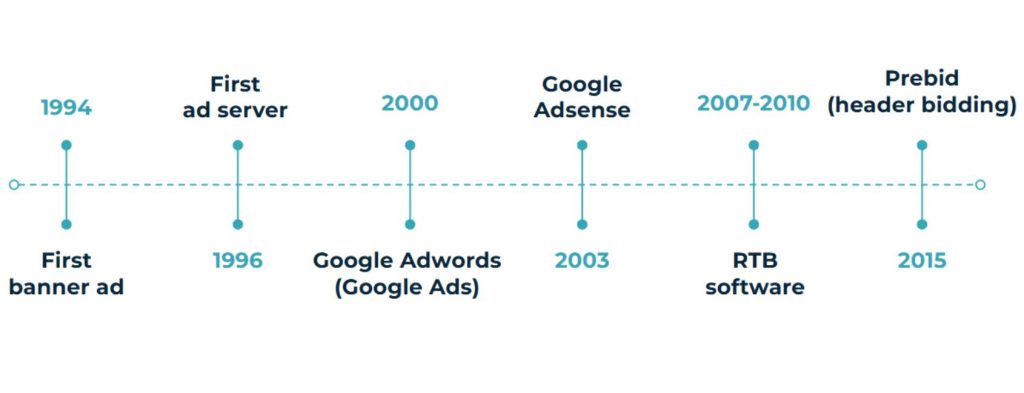-
TrendsArtificial IntelligenceSocial Media
-
SectorOthers
-
CountriesGlobal
The evolution of digital advertising has transformed the way brands connect with their audiences. In this new context, programmatic buying not only optimizes advertising investment, but also allows for unprecedented levels of precision and personalization. It is a phenomenon that continues to grow and consolidate itself as one of the key areas within digital advertising.
Over the last few months, we have witnessed a steady increase in the number of companies joining this ecosystem, which underlines the interest in and need for adopting programmatic buying as an essential part of advertising strategies. The recent AdTech Landscape, published by Programmatic Spain, reflects this fact and places LLYC on the sector map.
At LLYC, we have adopted an approach that prioritizes advanced technology and data analysis, allowing us to segment audiences with exceptional precision and redefine the impact of digital campaigns. However, the impact of programmatic buying varies according to the particularities of each market. In developed economies, such as the United States or Western Europe, the technology is widely adopted. While in emerging markets, such as Latin America or Southeast Asia, its adoption is growing rapidly.
Thanks to our experience in adapting programmatic strategies to different cultural, economic and regulatory environments, LLYC ensures that brands can maximize their impact, regardless of their location.
A journey through the history of programmatic
Programmatic buying began in the late 2000s, when the first algorithms started to manage real-time bidding (RTB) auctions for advertising space. This technological advance allowed advertisers to buy individual impressions, eliminating manual negotiations and increasing the efficiency of the process.
Over time, the technology was refined and evolved. The introduction of DMPs (Data Management Platforms) and the integration of first and third-party audience data opened the door to more precise segmentation. Today, programmatic has expanded into channels such as video, mobile and social media, enabling integrated, omnichannel strategies that maximize advertising impact.

From broad focus to hyper-personalization
Traditionally, advertising campaigns focused on broad and ill-defined segments, which generated wasted investment and limited the relevance of the messages. Today, thanks to advanced segmentation technology, we can identify hyper-specific audiences based on demographic data, interests, online behavior and even purchasing patterns in real time.
Programmatic buying, supported by tools such as Demand Side Platform (DSP) and Data Management Platform (DMP) platforms, allows us to analyze large volumes of data and create detailed consumer profiles. This not only optimizes the effectiveness of campaigns, but also ensures that messages reach the right place, at the right time, and in the right format.
Technology at the service of precision
At LLYC we use cutting-edge technologies to segment audiences with impressive granularity. Our approach combines:
- First- and third-party data: We collect and analyze data from a variety of sources to gain a comprehensive view of target audiences.
- Predictive models based on artificial intelligence: We identify patterns of behavior and preferences that allow us to anticipate the needs and desires of consumers.
- Optimization in real time: We adjust campaigns on the fly to maximize their impact, making sure that every impression counts.
This segmentation capability not only improves the precision of campaigns, but also makes it possible to address niche audiences that would otherwise be difficult to reach.

Challenges of advanced segmentation
Although advanced segmentation offers numerous advantages, it also faces several challenges:
- Privacy and regulations: Data protection laws, such as the GDPR in Europe, limit access to and use of personal data, forcing advertisers to seek ethical and compliant targeting strategies.
- Data quality: Working with inaccurate or outdated data can lead to campaign errors, reducing their effectiveness.
- Channel integration: Ensuring a consistent user experience across channels remains a challenge.
At LLYC, we have developed solutions that address these problems, such as the adoption of our own data and the use of advanced integration tools to optimize campaigns.
Finally, one of the most underestimated factors in audience segmentation is context. The environment in which an ad is displayed directly affects its relevance and effectiveness. For example, an ad for fitness products will have more impact on a health blog than on a generic site. At LLYC we use advanced contextualization tools to ensure that ads appear in spaces that enhance their message. This not only improves the user experience, but also increases conversion rates. In addition, we have developed a strategic approach that integrates technology, data and creativity to maximize the impact of campaigns.
New opportunities for brands
The ability to segment audiences accurately has opened up new opportunities for brands. It is now possible to:
- Impact specific professionals in B2B sectors: Using contextual and behavioral data to identify key decision makers.
- Design messages for micro-audiences: For example, targeting technology lovers who are also environmental enthusiasts.
- Take advantage of key moments: Reaching consumers at specific stages of the customer journey, from discovery to conversion.
Some of our key strategies include:
1. Use of first-party data: Our clients take advantage of their own data collected from interactions with their audiences, such as website visits, platform registrations and transactions. This allows us to create highly accurate customer profiles and customize messages according to the specific needs of each segment.
2. Integration of artificial intelligence (AI): We apply machine learning algorithms to identify consumption patterns and predict user behavior. This facilitates the delivery of advertisements at optimal times, increasing the likelihood of conversion.
3. Cross-channel optimization: By integrating programmatic buying across multiple channels (display, video, social media and mobile), we achieve a consistent user experience and increase the effectiveness of campaigns.
4. A/B testing and dynamic creatives: We conduct continuous tests to determine which messages, designs and formats generate the greatest impact on different audiences. This includes creatives that adapt in real time according to the user’s profile.
From segmentation to business optimization
Beyond precise segmentation and message personalization, programmatic buying plays a fundamental role in improving business results. The ability to anticipate audiences and understand their behavior makes it possible to optimize each stage of the customer journey, from acquisition to conversion and loyalty.
In sectors such as retail, automotive and banking, predictive models make it possible to identify customers with the highest probability of purchase, facilitating more precise segmentation. By integrating these models with programmatic advertising, brands can dynamically adjust creatives and optimize their impact strategies. In consumer goods, for example, this translates into more effective retargeting campaigns, reaching users at key moments in their purchasing decision.
Thanks to advanced analytics and AI, brands can adapt their campaigns dynamically. This ensures that each advertising investment is more efficient and relevant, resulting in improvements in key metrics such as return on investment (ROI), conversion rate and customer lifetime value. In addition, programmatic advertising contributes to creating consistent and personalized user experiences across multiple channels, strengthening the relationship with consumers and consolidating the brand’s presence in the market.
The future of programmatic buying

The future of programmatic buying promises significant advances, including:
- Full automation: Tools that will allow for completely autonomous campaign management.
- Greater AI integration: More sophisticated algorithms capable of predicting behaviors with astonishing accuracy.
- Predictive segmentation: Using real-time data to anticipate consumer needs.
In such a dynamic environment, LLYC is at the forefront, adopting and developing technologies that ensure the success of our clients’ campaigns.
Audience segmentation technology has transformed programmatic buying into a powerful tool for brands looking to stand out in a competitive market. At LLYC, we continue to explore new ways to innovate in this field, ensuring that our clients not only reach their target audiences, but do so in an effective, personalized and measurable way.




